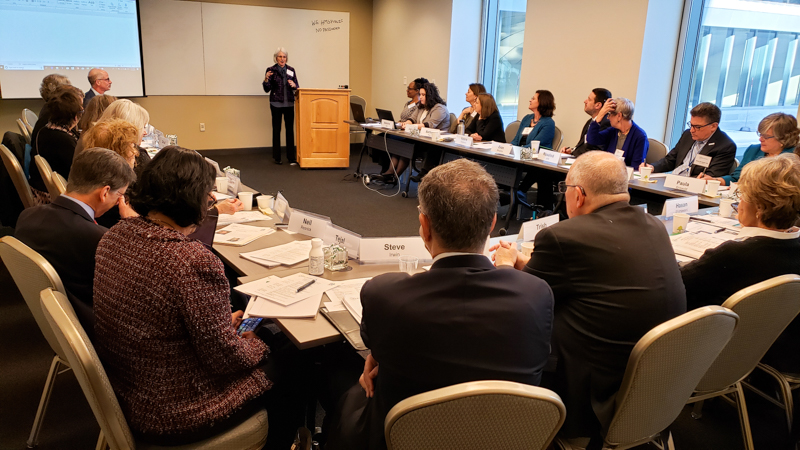Project & Program Updates
A Swerve in Patient Safety Strategy Kicks Off in Boston
Swerve is the Pittsburgh Regional Health Initiative's latest effort to reduce America's appalling medical error rate. A generation after the first studies documented the extensive deadly harm endemic in American medicine, medical errors now represent the third leading cause of death. And, 10 to 20 times that number are seriously and needlessly injured. After 20 years of effort to reduce this rate, PRHI can acknowledge the lack of progress. Our nation responds more aggressively to airline mishaps and viral epidemics—even though the risk level is probably much lower.
Recognizing that the 2020 Presidential election offers a unique opportunity to put the issue before the public and galvanize action, with health care reform hitting record high popularity among voters, we found a partner to execute a "swerve". A swerve is a break from tradition, a swift and meaningful change in direction from past solutions and conventional wisdom. Our objective is to put the issue of medical error into the platforms of candidates. With the Network for Excellence in Health Innovation (NEHI), our longtime partner (see our articles on Community Health Workers and Maternity Payment), we decided to launch three, day-long national conversations with select healthcare leaders who are knowledgeable about aspects of patient safety to refine a successful strategy.
Leading our first conversation in Boston was Ken Segel, co-founder and managing partner of Value Capture, who moderated six hours of non-stop brainstorming. The 22 distinguished participants included state health policy leaders, Harvard health economists, health policy experts from Northeastern and Brandeis, a regional health improvement executive, a consumer representative, present and former health system leaders and national and regional patient safety advocates. We focused on two promising strategies:
- 1.What financial incentives could be built into the popular, but as yet ill defined, public option that would incentivize rigorous safety protections; and
- 2.How could a National Patient Safety Authority win popular support, protect the public, and serve as a formal accountability agency of the Federal government? When two Boeing 737 MAX 8s crashed, when the Coronavirus threatened a worldwide outbreak, our nation knew whom to hold accountable for minimizing damage and accelerating a rapid and informed response.
This iterative conversation continues in Washington, DC on February 24th and in San Francisco on April 2nd. New participants will build on Boston's areas of agreement, consider controversial issues, address important items not yet discussed and formulate a viable political strategy. In D.C., we will build on a deep bench of national policy experts, safety advocates, data holders, association and agency executives and academic thought leaders to create the next version of our national plan to swerve.
Related Posts
By accepting you will be accessing a service provided by a third-party external to https://www.jhf.org/
